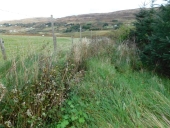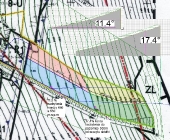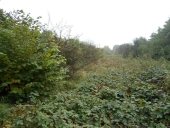








-





How Permies works: https://permies.com/wiki/34193/permies-works-links-threads
My projects on Skye: The tree field, Growing and landracing, perennial polycultures, "Don't dream it - be it! "




Henry Jabel wrote:Seabuckthorn should be fine its a coastal plant at the end of the day.
Black Locusts do best in well drained soil and reading about this Robinia dieback most seem to be suffering after excess wet conditions.
https://www.rhs.org.uk/advice/profile?pid=401
I have seen plenty in heavy clay that were quite happy, the question is how boggy your wet soil is going to be.
Some dogwoods (Cornus spp) survive well in flooded conditions and willow of course but they are not spiny. The only thing that springs to mind at the moment is hawthorn https://pfaf.org/user/plant.aspx?latinname=Crataegus+laevigata




Nancy Reading wrote:Hi MJ,
Are you worried about water build up in rain and erosion, or simply the water logging of the roots of the (nitrogen fixing) trees you have selected? Were they selected as spiny to be a barrier, supplementing the soon to be repaired hedge? Does it have to be oriented along the existing boundary?
FYI I've got some sea buckthorn here, albeit only it's first winter. I was worried it may be too wet here on Skye so have planted it on steeper slopes and edges where it should be well drained at least. I think Robinia will find it too cool here in summer....
Alternative nitrogen fixing tree for wet conditions is alder (Alnus cordata). Not edible but I'm mainly growing for wood fuel and shelter. It is very quick growing and loves damp.
















How Permies works: https://permies.com/wiki/34193/permies-works-links-threads
My projects on Skye: The tree field, Growing and landracing, perennial polycultures, "Don't dream it - be it! "




Nancy Reading wrote:Mj,
Given that the existing hedgerow has been there for a while without (presumably) aggravating a tendency to erosion my feeling is that you'll be fine once you have some tree and shrub cover.
Personally I'd go for more of a mixture, but I like to spread my risks a bit, especially with climate uncertainty. A search on the ferns website (I don't know whether my link will work but here it is The ferns search) suggested elder and field maple as well as a vast range of willows.
At East Devon Forest Garden Sagara has planted Italian alder round his field (albeit not sloped) and these will probably be a bit tall for you, since you don't want to shade your orchard too much.

|
Hoo hoo hoo! Looks like we got a live one! Here, wave this tiny ad at it:
All about SkIP, PEP, Badges, BBs and More!
https://permies.com/wiki/skip-pep-bb
|






